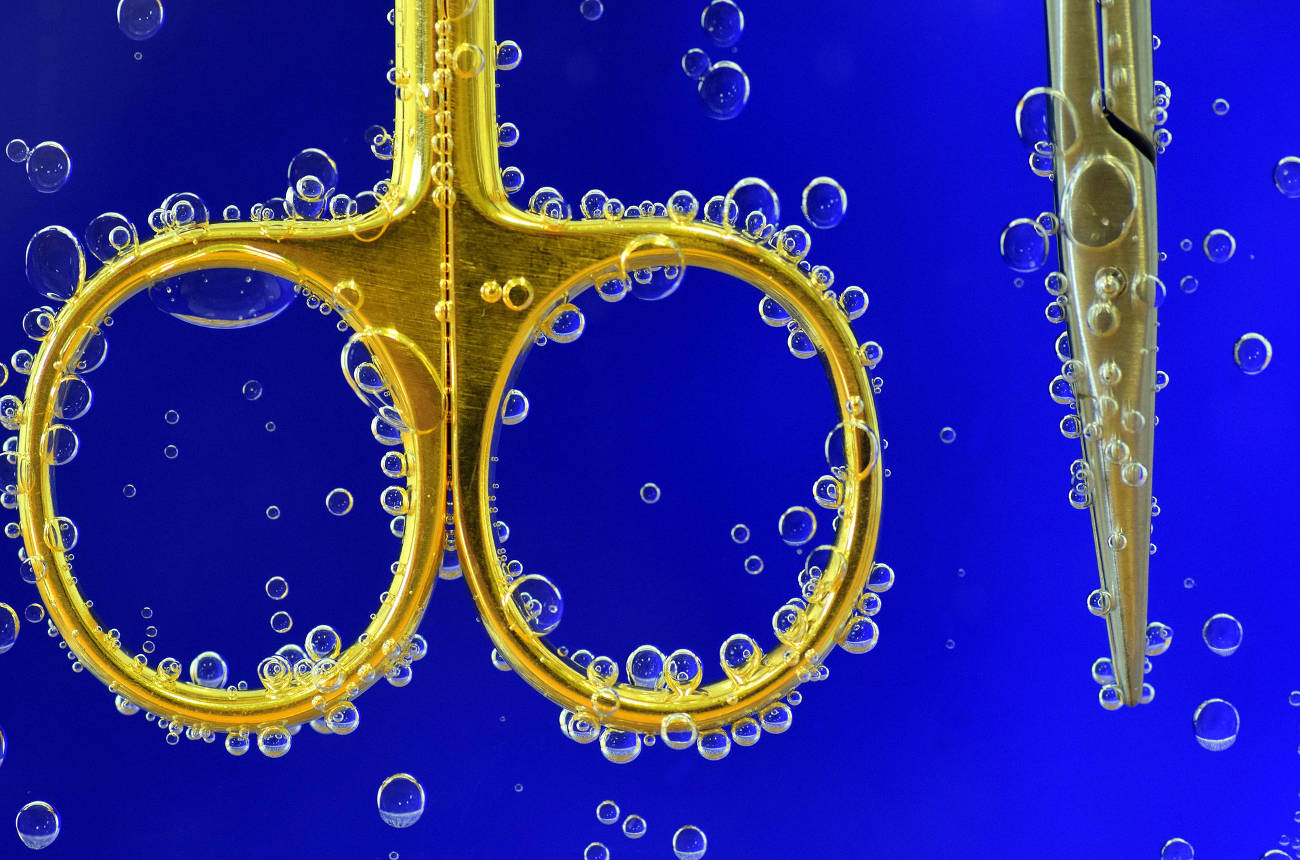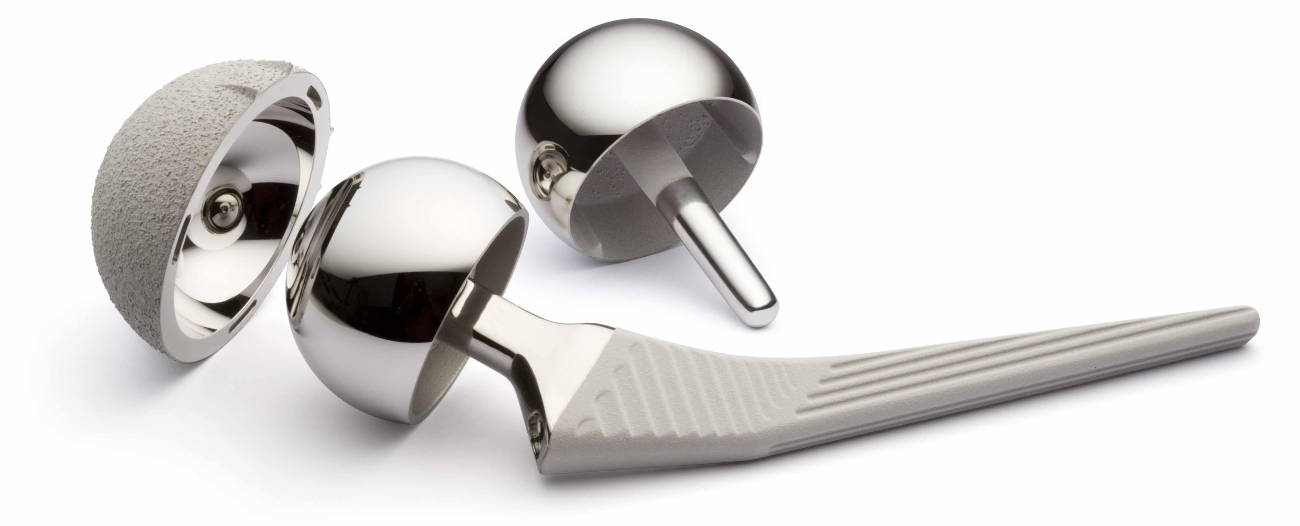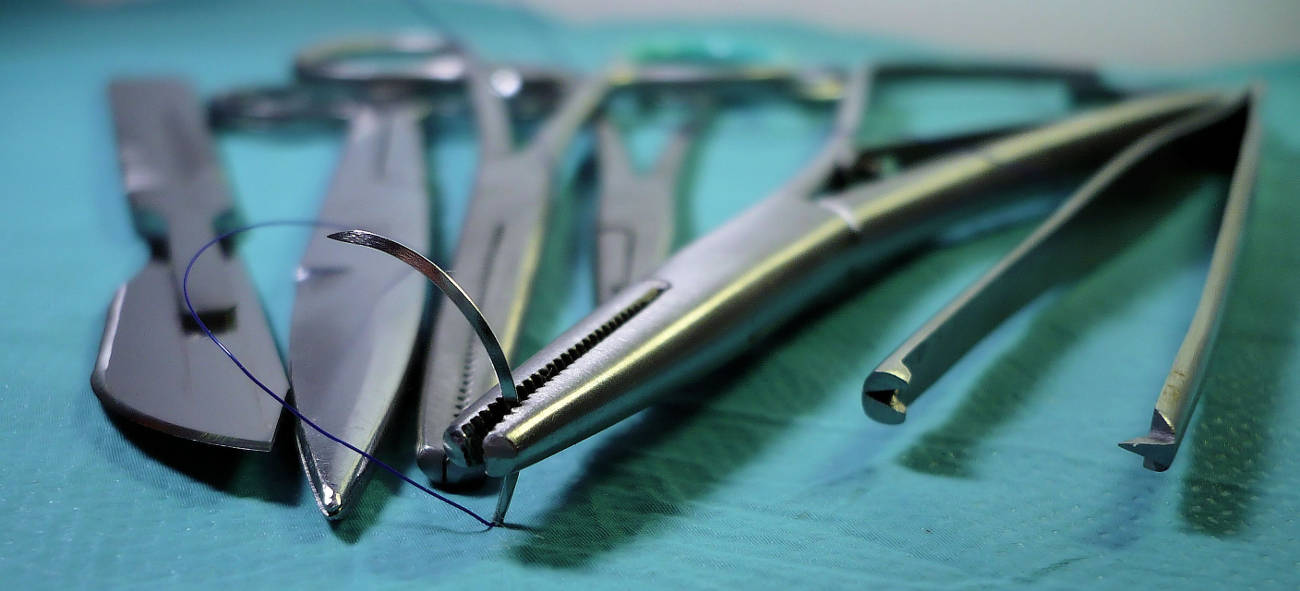PVD coatings in the medical field
The PVD coatings have an industrial application where it is necessary to obtain mechanical strength and resistance to chemical agents. The production of surgical instruments and medical prosthesis has been using PVD coatings for years, to obtain biocompatible and bacteriostatic characteristics from the pieces treated.
This article discusses:
- Medical PVD coatings: the performance required
- Biomaterials obtained using PVD coatings
- The advantages of PVD coating in the production of surgical instruments

Medical PVD coatings: the performance required
The basic requirements for coatings of devices to be used in the medical industry is biocompatibility, a characteristic that is defined by the UNI EN ISO 10993 standard which specifies the main principles that regulate the evaluation of biological safety of medical devices.
The biocompatibility of metals is also related to the corrosion resistance in biological environment: in fact, biological fluids are highly corrosive against metals.
During corrosion, metal ions are released with two possible consequences:
- The loss of the prosthetic’s function due to the reduction in its mechanical properties;
- Contamination of both the surrounding tissue and the entire organism, with what are often toxic metal ions, with even severe damages to the patient’s health.
These principles make PVD coatings for medical equipment that come into contact with the human organism essential. These are coatings for instruments for the surgical, orthopaedic, dental, orthodontic, and anaesthetic fields. These include: scalpels; blades; cannulas for anaesthesia with special ultrasound visibility characteristics with ease of sliding, biocompatibility and electric insulation; tools for orthodontics, milling heads, and orthodontic bits and reamers.
In addition to biocompatibility, the qualities that are most often required for the coatings destined for the surgical instruments are
- Bacteriostatic compatibility
- Wear resistance
- Shear resistance
- Assortment of colours (colour is often used in operating theatres to distinguish instruments of different size)
Many components approved by the USA FDA use TiN (Titanium Nitride) for its biocompatibility and atoxicity.
With its chemical stability, Titanium Nitride acts as a barrier layer against the material layer below, reducing the interaction of the biological liquids with the base metals of the prosthetics, decreasing the risk of rejection. Titanium Nitride coating is used to increase the performance of surgical instruments as well as medical and dental implants, providing an inert surface barrier that protects materials from corrosion while improving their wear resistance and maintaining the integrity of the cutting edge for longer life. The reduced friction coefficient provided by the coating helps to prevent the adherence of tissue to the instruments.
Chromium Nitride (CrN) coating is used on orthopaedic and dental instruments and implants to supply a corrosion protection barrier, improve the wear resistance and to maintain the same characteristics, even after repeated sterilization cycles in autoclaves.
The main applications of PVD coatings in the medical field involve the coating of components for bone prosthesis, dental systems, surgical tools, dental technician equipment, components for endoscopic probes, and coronary stents. Specifically, in joint endoprosthesis it is fundamental to use materials characterized by an optimum wear resistance, low friction coefficient and elevated fatigue resistance.

Biomaterials obtained from PVD coating
In general, a material is considered biostable when it is not altered by biological fluids, and vice versa, it is called biodegradable when it undergoes chemical transformation that alters or modifies its properties. A characteristic of Biomaterials is biostability.
A Biomaterial is a systemically, pharmacologically inert substance designed for implantation within or incorporation with a living system. (Definition of Biomaterials at the 6th Annual International Biomaterial Symposium, 1974)
A Biomaterial is any substance (other than a drug) or combination of substances, synthetic or natural in origin, which can be used for any period of time, as a whole or as a part of a system which treats, augments, or replaces any tissue, organ, or function of the body.
(Definition of Biomaterial - Consensus Conference on the Clinical Application of Biomaterials, National Health Institute, Bethesda, USA, 1984)
A Biomaterial is a non-living substance used in the manufacture of a medical device that in some points interacts with a living substance. (Definition of Biomaterial – European Society for Biomaterials, Chester, UK, 1986)
Antibacterial PVD coatingA special certified antibacterial PVD treatment can be applied to surfaces in contact with humans to ensure a continuous antibacterial action throughout the object’s life time. This type of coating is often used to protect medical instruments and prostheses, but also entrance door handles in shops and public places, handrails of means of transport and surfaces subject to continuous interaction with people, as well as tools and objects of domestic use such as cutlery, cookware and household items. The antibacterial action of PVD coating, which has also proved to be hypoallergenic for humans, is obtained thanks to nanotechnology. This technique is able to destroy the cell membrane of bacteria by blocking their nutrition and interrupting the cell division cycle. The effectiveness of antibacterial PVD coatings has been tested by national and international research centres. These treatments work against bacterial families that are primarily responsible for contact infections (Gram-positive and Gram-negative bacteria), with excellent results on both freshly produced samples and used products. |
In summary, a Biomaterial is a material exploited in contact with biological systems to evaluate, treat, improve or replace any tissues, organ, or function of the human body. This definition identifies biomaterials in relation to their end use and not in relation to their properties. Polyethylene, for example, is not a biomaterial when it is used to manufacture a food container; it is a biomaterial when it is the acetabular cup in a hip prosthesis.
Ask for an estimate for your needs
The advantages of PVD coating in the production of surgical instruments
Medical devices treated with PVD coating have better functional characteristics and make the instruments easier to recognize in the operating theatre, offering advantages in both appearance and function.
The PVD coatings are biocompatible, very hard and inert, and do not react with bones, tissues or body fluids. This makes them especially suitable for the use on medical devices, components, and surgical instruments.

Among the main advantages of using PVD coatings on medical devices:
- Cutting edge protection: the surgical instruments remain sharp even after intensive use and repeated sterilization in autoclave
- Corrosion reduction: metal parts protected by the PVD coating are not subject to the direct action of body fluids
- Functional appearance: different colours are available to facilitate the choice of the instruments during operations in the theatre
- Proven wear resistance
- Non-stick to body tissues
- Corrosion and oxidation resistance
Physical vapour deposition (PVD) is a coating process performed under vacuum that is commonly used to improve the performance of cutting tools in the manufacturing industry. This treatment increases the life of a tool up to 10 times compared to a non-coated tool, improving its hardness, self-lubrication, and resistance to wear. PVD treatments are used more often by medical device manufacturers to improve the performance of their products and to distinguish similar products and models using the assortment of appearance and colour available.
As in the production of tools, drill bits, milling heads, reamers, in the medical instrument industry PVD offers greater cutting edge protection so that the coated surgical tools remain sharp and ensure maximum precision of use for the entire life of the instrument.
PVD is ecological
The entire PVD process is innocuous for the environment. Under no phase of processing are polluting liquids or toxic waste produced that can poison our planet. The PVD process is safe, clean and eco-sustainable.
PVD is not toxic so it is used to treat medical instruments, like scalpel and saw blades for orthopaedic use, where honing and lifetime are important, in implants and treatment of materials for bone prosthesis, especially for hips.
It is even used for kitchen equipment, like cutlery, trays, and decor items for prolonged contact with people.
Ask for an estimate for your needs



